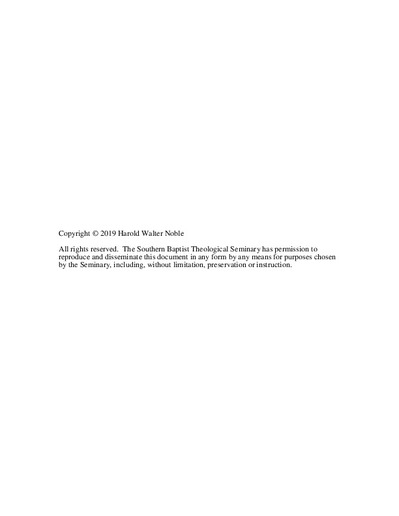| dc.description.abstract | The purpose of this project was to determine if a self-directed, modern
technology-based teaching method was as effective at teaching content as the traditional
lecture and workbook teaching method. With the demographics of Living Word Baptist
Church Elizabethtown being mostly Generation X and Millennials, it appeared prudent to
tailor any teacher training program to meet the needs of the church demographics. While
programs and books are available for teacher training, most focus on traditional teaching
methods. Generation X and Millennials generally have a strong propensity toward the
use of electronic technologies; therefore, the best solution to reach the targeted population
effectively appeared to be a technology-rich educational environment. Accordingly, this
project focused on discovering the most effective training methods, which meant
determining if self-directed learning using technology is as effective as traditional
teaching methods.
Chapter 1 explains the ministry context of Living Word Baptist Church
Elizabethtown, along with the rationale, purpose, goals, research methodologies,
definitions, and delimitations of the project.
Chapter 2 establishes that the warrant to teach is found throughout the
Scriptures, with the foundation to teach being laid in the Old Testament and expanded in
the New Testament. Jesus builds on this foundation by teaching and by directing his
disciples to go forward and teach. Additionally, in both the Old and New Testaments a
variety of teaching methods are abundantly demonstrated.
Chapter 3 is a brief history of education, specifically the growth and use of
new technologies in education, including hardware, software, and methods. The argument
is made that as civilization advances, education advances as well. Also, the church, which
was once a leader in education, no longer enjoys that position. The point is made that if
the church is to stay healthy and relevant, it should emulate the public and private school
systems by adopting and utilizing the latest technologies in hardware, software, and
teaching methodologies.
Chapter 4 outlines the elements of the research project, which is an explanation
of the goals, the methods to meet the goals, and the statistical methods of analysis. The
final analysis of the data examines the differences in the two teaching methods. Chapter
5 is an evaluation of the project’s purpose and goals. In short, it is a conflation of the
project results and includes recommendations for future projects. | en_US |

